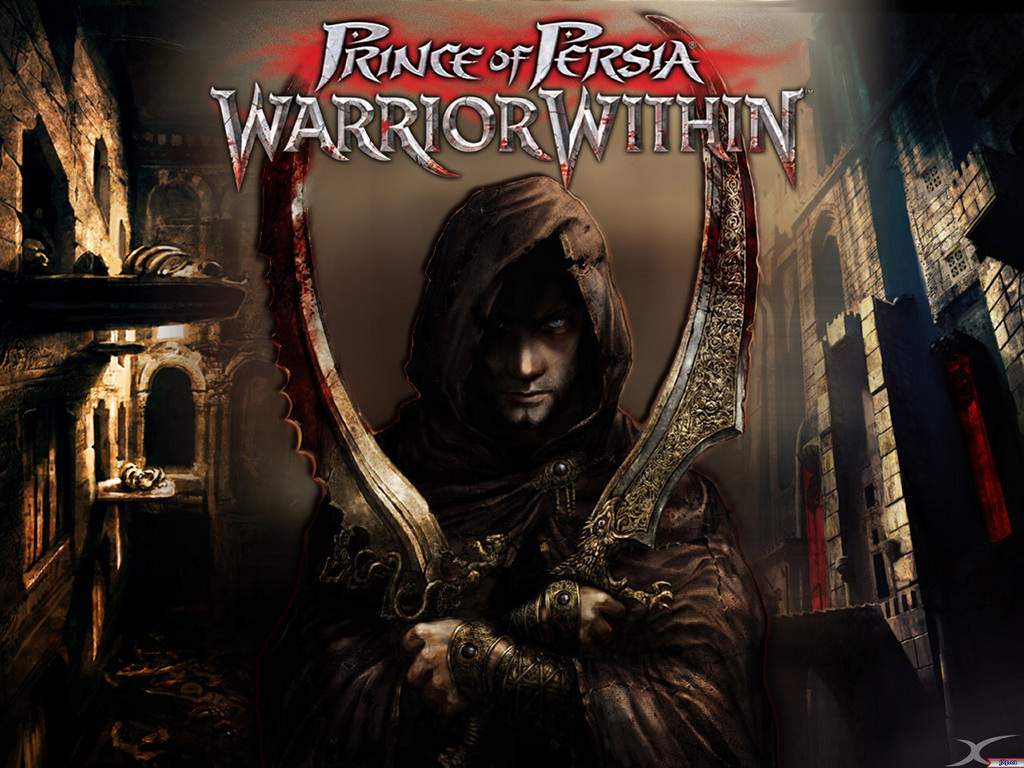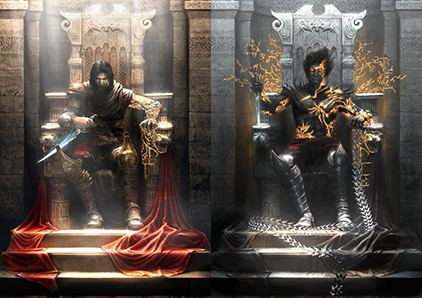Other media
Graphic novel
Main article: Prince of Persia: The Graphic NovelJordan Mechner finished writing the story for a graphic novel in 2007. The novel was written by A.B. Sina, and illustrated by Alex Puvilland and LeUyen Pham. It was released by First Second Books in autumn 2008. The story follows two Princes, jumping to and from the 9th and 13th centuries. Although it belongs to the franchise the plot is not related to any of the game continuities or that of the 2010 film.[13]
Prince of Persia: Before the Sandstorm
"Before the Sandstorm" is a 2010 one-shot comic book that serves as a direct prequel to the feature film and thus explains the motives and backgrounds of some characters. It was published by Disney press and written by Jordan Mechner with illustrations by Todd Mcfarlane, Nico Henrichon, David Lopez and Bernard Chang.
Lego Prince of Persia
Main article: Lego Prince of PersiaFilm adaptation
Main article: Prince of Persia: The Sands of Time (film)Recurring elements
The Prince's darker side
In both original 2D games and The Sands of Time trilogy the Prince encounters alternate forms of himself.
The Shadow is created in Prince of Persia when the Prince leaps through a magic mirror. The Shadow mimics the appearance of the Prince, but is clad in darker coloured clothes. It hinders the player's progress several times throughout the game, but in the end the Shadow and the Prince merge, becoming a single person once again. The Shadow returns in Prince of Persia 2: The Shadow and the Flame, but this time, rather than being a separate being which hinders the Prince's progress, the Prince can become the Shadow, abandoning his body to become an invisible ghost. The Shadow allows the Prince to retrieve a sacred blue flame from a temple, as the Prince is killed by a guard. When the Shadow retrieves the blue flames, the Prince rises again, this time possessing the flames himself. During the end events of the game, the Prince takes the appearance of the Shadow again, using it to launch the sacred flame at Jaffar, killing him. The Shadow then merges again with the Prince, making no further appearances.
In Warrior Within the Prince encounters the "Sand Wraith", who is later revealed to be the Prince from the future, wearing the "Mask of the Wraith" - a powerful ancient artifact, which can be used to travel back in time to fix one's previous mistakes. The Sand Wraith has much improved time controlling abilities, but his health degrades over time. With the help of the Mask, the Prince manages to sacrifice himself from the past and change his fate.
In The Two Thrones the Prince is infected with the essence of the Sands of Time, which causes him to develop an evil alternate personality - The Dark Prince, which in turn is the evil side of him for the past seven years, which led to the events and the reason why Warrior Within is so brutal and bloody. The Dark Prince has some improved fighting and acrobatic skills, but his health also degrades over time, so he must regularly consume Sands of Time to remain alive. The Prince reverts back to his normal form by touching water. Sensing that his alternate personality is slowly taking him over, the Prince finally manages to overcome it and defeats his enemies on his own.
The Dagger of Time
The Dagger of Time is a powerful weapon, capable of allowing its wielder to harness the power of the Sands of Time, and manipulate time itself. If the wielder steps into a large concentration of the Sands of Time, the Dagger of Time will allow them a brief look into the future. The Dagger of Time also is capable of making its wielder immortal. If the wielder uses the weapon to harness the power of the Sands of Time, then impales themselves with the blade, it will embed the Sands of Time into that wielder, making them immortal. The Dagger of Time is also the "key" which opens the lock on the Hourglass of Time.
The Dagger of Time was created on the Island of Time for the ability of controlling the sands, as indicated by the Vizier in Prince of Persia: The Two Thrones, who expressed his feelings over finding it there. It was stolen from the Island of Time before the events of Prince of Persia: The Sands of Time by the Maharajah of India, along with the Hourglass of Time, which contain the Sands of Time. The Prince uses the Dagger of Time to release the Sands of Time during the events of the game. This brings about a plagu of sorts; only carriers of the artifacts of time avoid mutation, and the resulting monsters can also only be killed by the artifacts of time. At the end of Prince of Persia: The Sands of Time, the Prince uses the Dagger of Time to lock the Sands of Time back into the Hourglass of Time, reversing the events of the game. He then gives the Dagger of Time to the Maharajah's daughter, telling her to lock it in the Maharajah's treasure vaults.
It is revealed in the Prince of Persia: The Two Thrones that the Vizier is alive again, due to the Prince's manipulation of the time line. Upon searching the Island of Time, the Vizier once again finds the Dagger of Time . He kills the Maharajah of India, and uses his army to invade Babylon, the place where the Empress of Time will soon arrive. He uses it to kill Kaileena, releasing the Sands of Time, but then impales himself, which makes him immortal. During this transformation, the Prince retrieves the Dagger of Time once again. At the end of the game, the Prince uses the Dagger of Time to kill the Vizier. The freed Sands of Time form a physical manifestation of the spirit of Kaileena, who takes the Dagger of Time from the Prince, and destroys it, along with the Sands of Time.
Awards
The success of the Prince of Persia series resulted in Guinness World Records awarding the series 6 world records in the Guinness World Records: Gamer's Edition 2008.These records include, "First Motion-Capture Animation in a Video Game" and "Highest Rated Platformer on PS2 and Xbox".














Log in to comment